实际项目中,需要给出识别轮廓的长度和宽度。
初步分析:
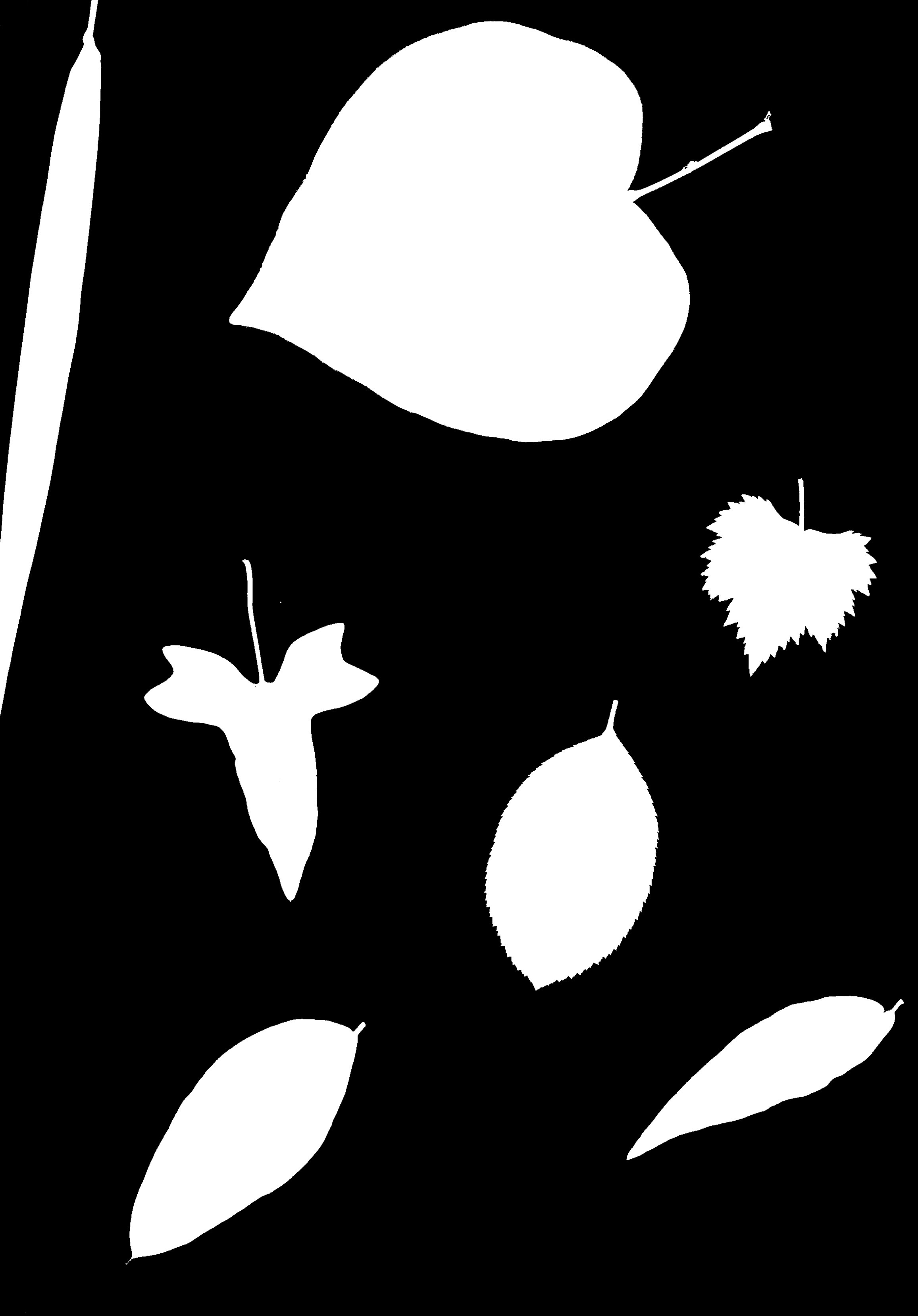
轮廓分析的例程为:
int main(
int argc,
char
*
* argv )
{
//read the image
Mat img
= imread(
"e:/sandbox/leaf.jpg");
Mat bw;
bool dRet;
//resize
pyrDown(img,img);
pyrDown(img,img);
cvtColor(img, bw, COLOR_BGR2GRAY);
//morphology operation
threshold(bw, bw,
150,
255, CV_THRESH_BINARY);
//bitwise_not(bw,bw);
//find and draw contours
vector
<vector
<Point
>
> contours;
vector
<Vec4i
> hierarchy;
findContours(bw, contours, hierarchy, CV_RETR_LIST, CV_CHAIN_APPROX_NONE);
for (
int i
=
0;i
<contours.size();i
++)
{
RotatedRect minRect
= minAreaRect( Mat(contours[i]) );
Point2f rect_points[
4];
minRect.points( rect_points );
for(
int j
=
0; j
<
4; j
++ )
line( img, rect_points[j], rect_points[(j
+
1)
%
4],Scalar(
255,
255,
0),
2);
}
imshow(
"img",img);
waitKey();
return
0;
}
得到结果:
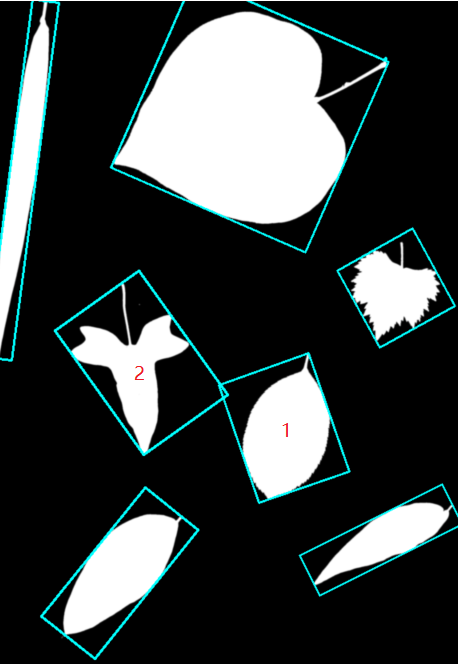
对于这样 的轮廓分析,标明出来的1和2明显是错误的。但是除了minAreaRect之外,已经没有更解近一步的方法。
也尝试首先对轮廓进行凸包处理,再查找外接矩形,效果同样不好。
解题思路:
仍然要从现有的、稳定运行的代码里面找方法。目前OpenCV函数
getOrientation
能够通过PCA方法找到图像/轮廓的方向
比如这样:
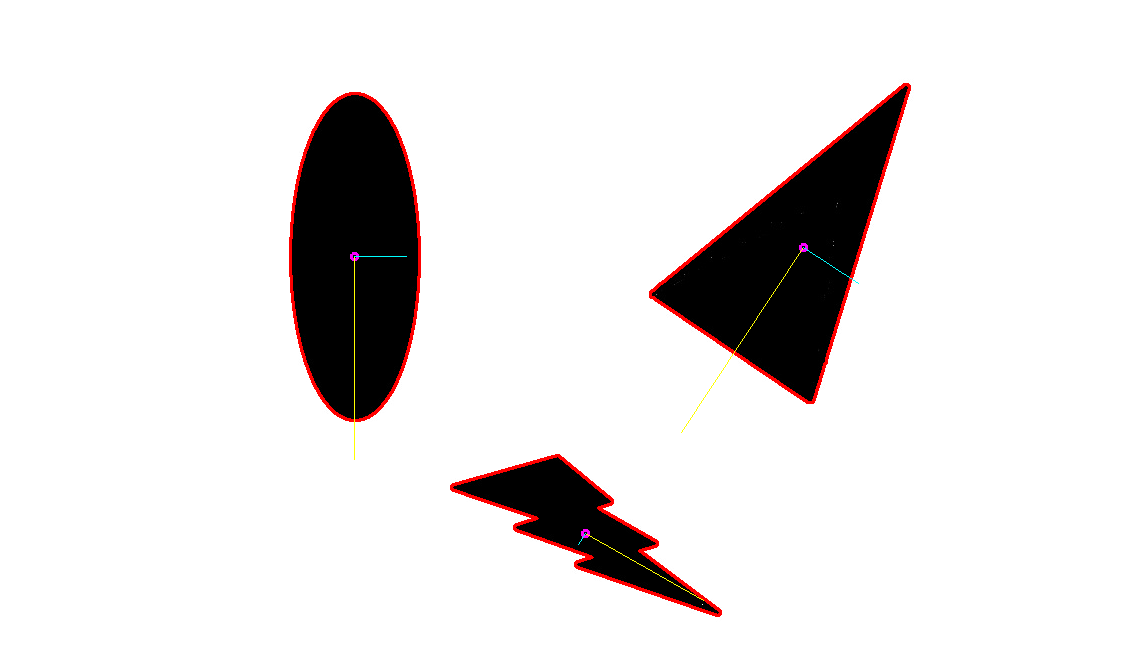
在项目图片上能够得到这样结果:

显然是更符合实际情况的,当然,叶柄这里产生了干扰,但那是另一个问题。
获得主方向后,下一步就是如何获得准确的长和宽。PCA方法无法获得长宽,也尝试通过旋转矩阵的方法直接获得结果:
////以RotatedRect的方式返回结果
//RotatedRect box;
//box.center.x = pos.x;
//box.center.y = pos.y;
//box.size.width = flong;
//box.size.height = fshort;
//box.angle = (float)atan2( eigen_vecs[0].y, eigen_vecs[0].x)*180/3.1415926; //弧度转角度
////绘制rotateRect
//Point2f rect_points[4];
//box.points( rect_points );
//for( int j = 0; j < 4; j++ )
// line( img, rect_points[j], rect_points[(j+1)%4],Scalar(0,0,255),2);
但是需要注意的是,这里的pca获得的center并不是绝对的center,而且在中线两边,轮廓到中线的长度不一定一样。为了获得最精确的结果,就需要直接去求出每个边的长度,并且绘制出来。
思路很简单,就是通过中线(及其中线的垂线)将原轮廓分为两个部分,分别求这两个部分的到中线的最大距离(加起来就是长,分开来就是位置)。
求的长轴端点:
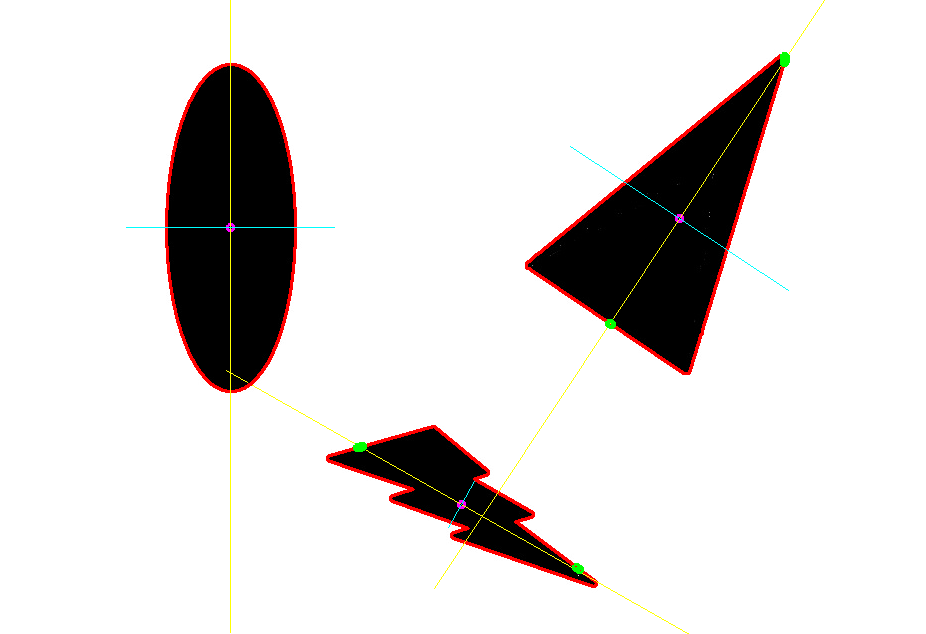
求得到中线最远距离点(蓝色),这也就是到中线的距离。
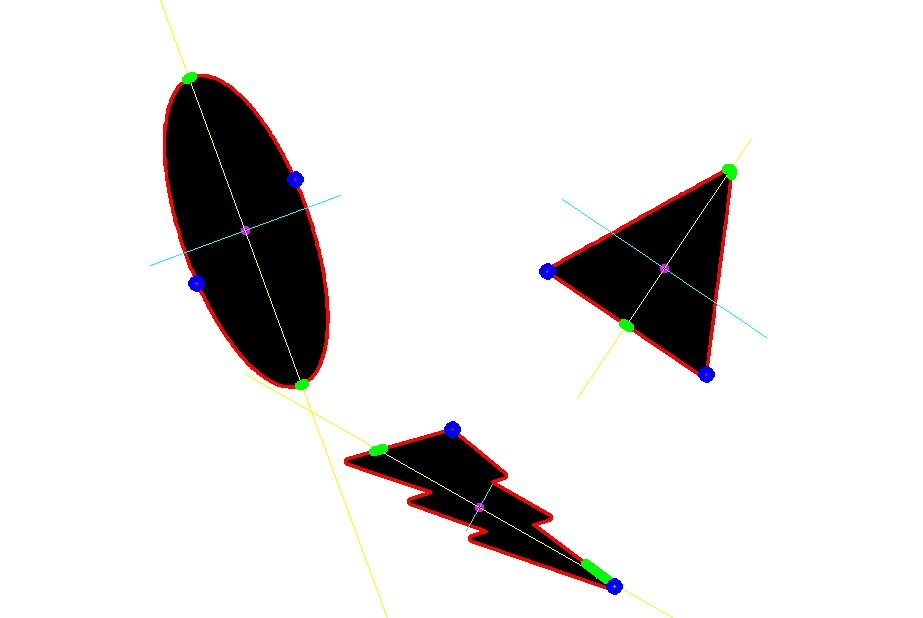
距离的计算很多时候只是点的循环。最后存在一个问题,那就是这样一个图像,已经知道p0-03的坐标,和两条轴线的斜率,如何绘制4个
角点?
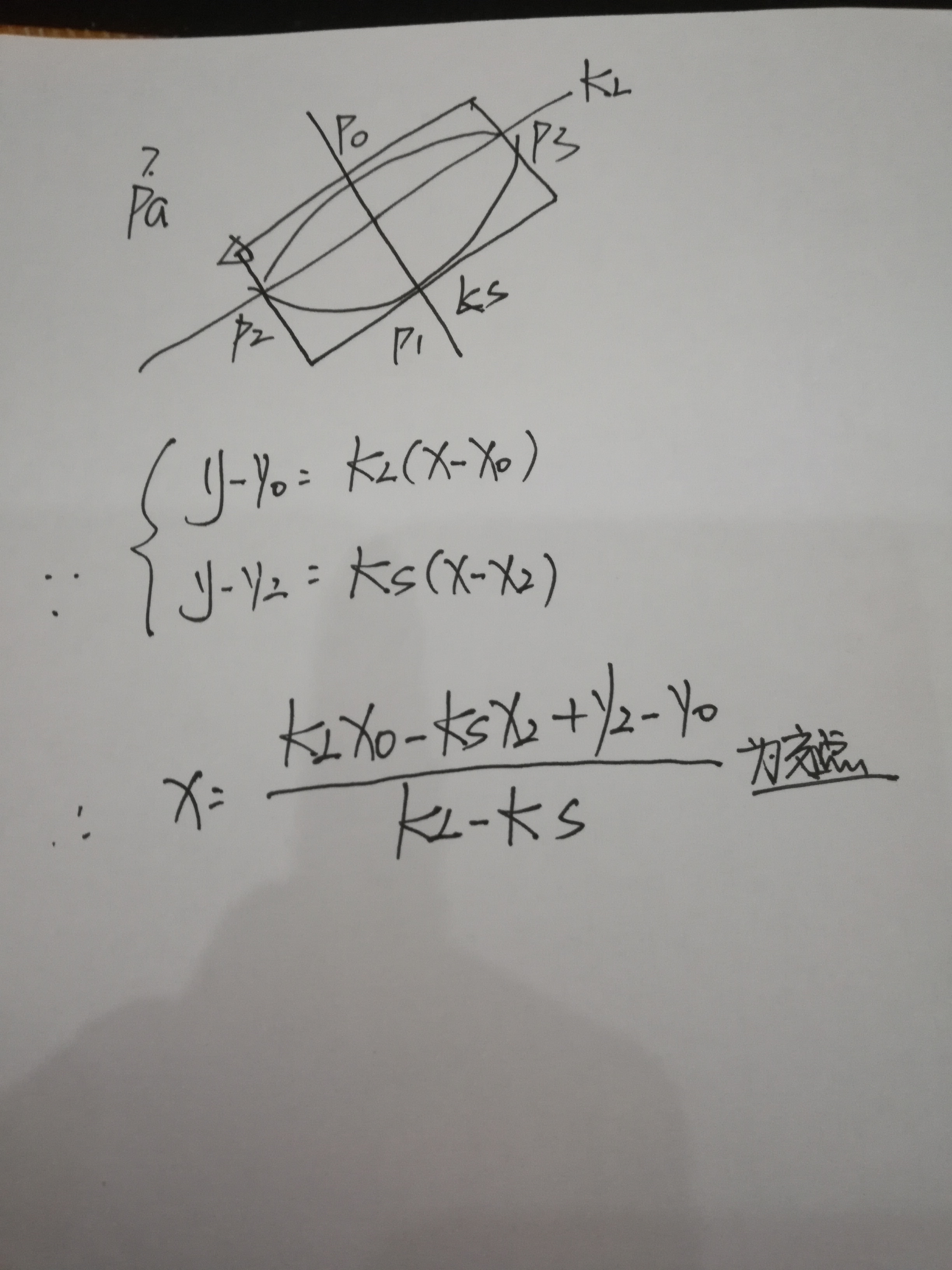
实际上,这是一个数学问题,并且有解析解:
//通过解析方法,获得最后结果
Point p[4];
p[0].x = (k_long * _p[0].x - k_short * _p[2].x + _p[2].y - _p[0].y) / (k_long - k_short);
p[0].y = (p[0].x - _p[0].x)*k_long + _p[0].y;
p[1].x = (k_long * _p[0].x - k_short * _p[3].x + _p[3].y - _p[0].y) / (k_long - k_short);
p[1].y = (p[1].x - _p[0].x)*k_long + _p[0].y;
p[2].x = (k_long * _p[1].x - k_short * _p[2].x + _p[2].y - _p[1].y) / (k_long - k_short);
p[2].y = (p[2].x - _p[1].x)*k_long + _p[1].y;
p[3].x = (k_long * _p[1].x - k_short * _p[3].x + _p[3].y - _p[1].y) / (k_long - k_short);
p[3].y = (p[3].x - _p[1].x)*k_long + _p[1].y;
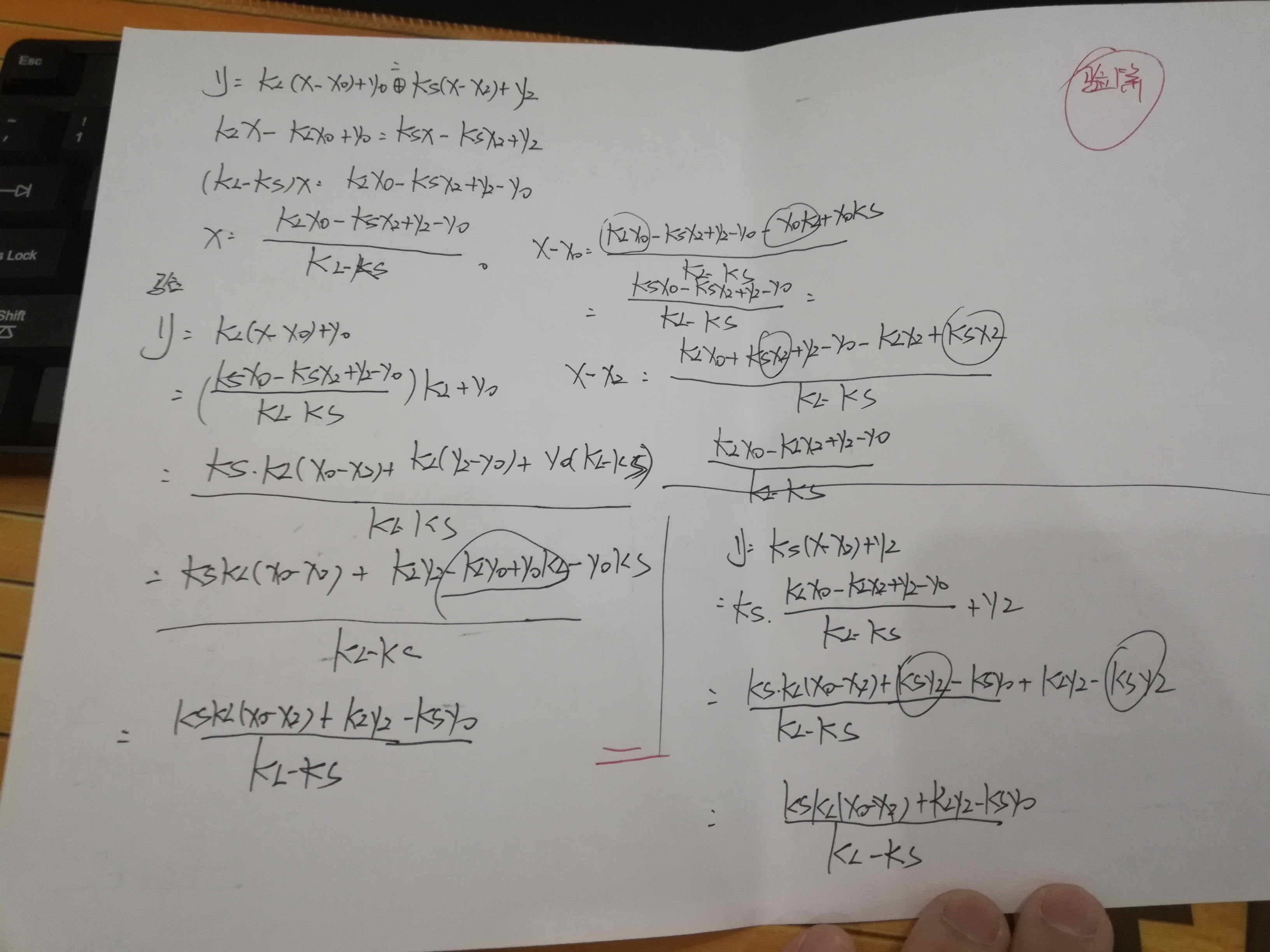
成功!!!
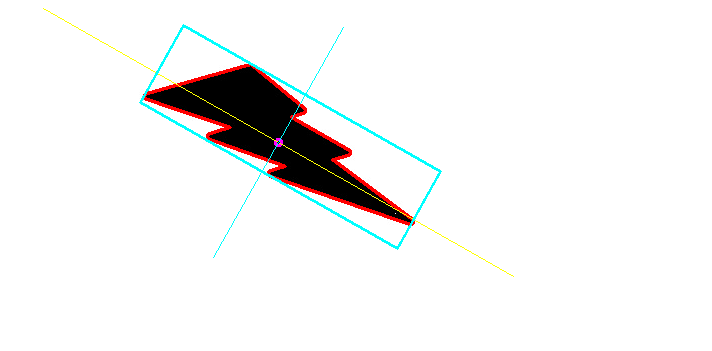
得到最后结果,这正是我想要得到的。但是由于算法稳定性方面和效率的考虑,还需要进一步增强。
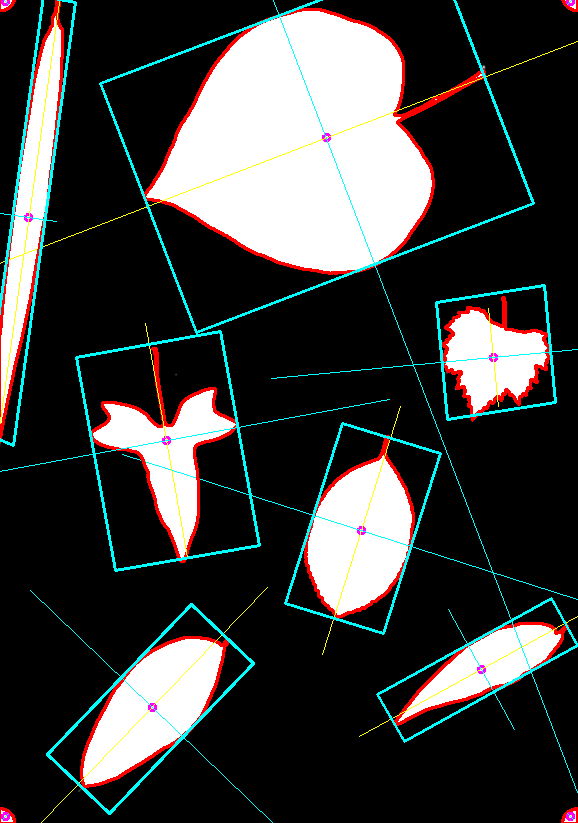
p.s
重新翻了一下minarearect
cv
:
:RotatedRect cv
:
:minAreaRect( InputArray _points )
{
CV_INSTRUMENT_REGION()
Mat hull;
Point2f out[
3];
RotatedRect box;
convexHull(_points, hull,
true,
true);
if( hull.depth()
!= CV_32F )
{
Mat temp;
hull.convertTo(temp, CV_32F);
hull
= temp;
}
int n
= hull.checkVector(
2);
const Point2f
* hpoints
= hull.ptr
<Point2f
>();
if( n
>
2 )
{
rotatingCalipers( hpoints, n, CALIPERS_MINAREARECT, (
float
*)out );
box.center.x
= out[
0].x
+ (out[
1].x
+ out[
2].x)
*
0.
5f;
box.center.y
= out[
0].y
+ (out[
1].y
+ out[
2].y)
*
0.
5f;
box.size.width
= (
float)std
:
:sqrt((
double)out[
1].x
*out[
1].x
+ (
double)out[
1].y
*out[
1].y);
box.size.height
= (
float)std
:
:sqrt((
double)out[
2].x
*out[
2].x
+ (
double)out[
2].y
*out[
2].y);
box.angle
= (
float)atan2( (
double)out[
1].y, (
double)out[
1].x );
}
else
if( n
==
2 )
{
box.center.x
= (hpoints[
0].x
+ hpoints[
1].x)
*
0.
5f;
box.center.y
= (hpoints[
0].y
+ hpoints[
1].y)
*
0.
5f;
double dx
= hpoints[
1].x
- hpoints[
0].x;
double dy
= hpoints[
1].y
- hpoints[
0].y;
box.size.width
= (
float)std
:
:sqrt(dx
*dx
+ dy
*dy);
box.size.height
=
0;
box.angle
= (
float)atan2( dy, dx );
}
else
{
if( n
==
1 )
box.center
= hpoints[
0];
}
box.angle
= (
float)(box.angle
*
180
/CV_PI);
return box;
}
那么,这个官方函数首先就把轮廓找了hull矩。这个当然对于很多问题都是好方法,很简单直观(我这里的方法就繁琐很多)。但是忽视了一个重要问题:hull变换后,会丢失信息。显然这就是结果不准确的原因。
我也在answeropencv上进行了咨询,berak给出的comment是
maybe: